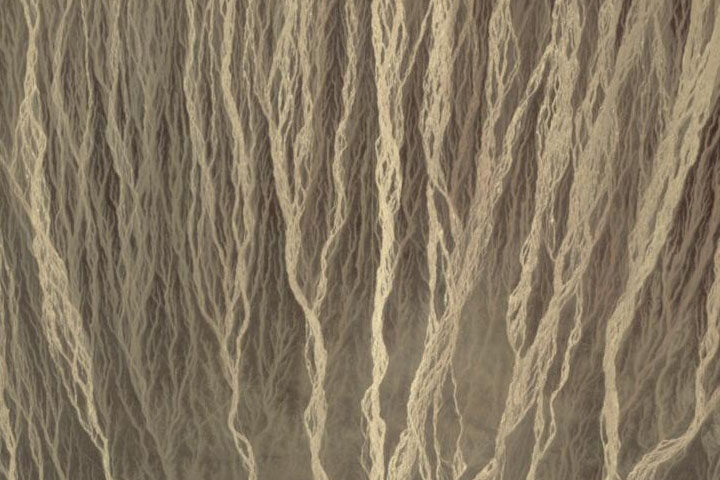
Every month on Earth Matters, we offer a puzzling satellite image. The May 2019 puzzler is above. Your challenge is to use the comments section to tell us what we are looking at and why it is interesting.
How to answer. You can use a few words or several paragraphs. You might simply tell us the location. Or you can dig deeper and explain what satellite and instrument produced the image, what spectral bands were used to create it, or what is compelling about some obscure feature in the image. If you think something is interesting or noteworthy, tell us about it.
The prize. We can’t offer prize money or a trip to Mars, but we can promise you credit and glory. Well, maybe just credit. Roughly one week after a puzzler image appears on this blog, we will post an annotated and captioned version as our Image of the Day. After we post the answer, we will acknowledge the first person to correctly identify the image at the bottom of this blog post. We also may recognize readers who offer the most interesting tidbits of information about the geological, meteorological, or human processes that have shaped the landscape. Please include your preferred name or alias with your comment. If you work for or attend an institution that you would like to recognize, please mention that as well.
Recent winners. If you’ve won the puzzler in the past few months or if you work in geospatial imaging, please hold your answer for at least a day to give less experienced readers a chance to play.
Releasing Comments. Savvy readers have solved some puzzlers after a few minutes. To give more people a chance to play, we may wait between 24 to 48 hours before posting comments.
Good luck!
Update: The answer to the May Puzzler is available here. Congratulations to Dan Mahr for being one of the first readers to recognize that this was part of an alluvial fan.




This is an alluvial fan, where water flow from a single source diverges and spreads over a large, flat region in a series of nearly-parallel braided stream channels. This particular alluvial fan resembles those in western China in Gansu and Xinjiang provinces. For example, there is a similar alluvial fan just west of Yumen where the Shule River spreads out over a large plain.
Numerous dry channels on a large alluvial fan
Photo is a close-up of “glacial flour” mixed into glacial melt water in the Godfrey River which flows into Lake Tekapo in New Zealand. The glaciers pulverize rock to create the “flour” as they move through the valleys and walls upstream and the result is the effect depicted in the photo.
Flash floor area in foothills, possibly Siwaliks (Himalayas), during monsoon rains. Image can best be viewed sideways. The satellite image is somewhat oblique across the surface.
Dirty-blond hair! Kiddng
Waterfalls
It looks like a microscopic image to me and this hair like thing could be the connector between two things giving its end a strong bond or connection
esas formas solo traza el agua…flow paths + twi
Fine roots threads from an aquatic tree
I think this is a close up of glacial melt from Godley River going into Lake Tekapo in New Zealand. The photo is was captured from was in the post called “How Glaciers Turn Lakes Turquoise”. I think the one above is a close up of the second image taken on May 12, 2019
River delta….I really am intrigued with the way it has layer and intertwined.
This is in one of the canyon on Mars. The streaked pattern is caused by wind/wind-blown small pebbles along a gentle down slope.
Hard to say if that’s inner Australia or inner Mongolia,
But what makes it interesting is the stratification
Of the old and new erosive channels going in various
different directions,
It’s like a visiual example for chaos theory .
Nice pic.
My guess answer is, Are they water waves? I find it interesting, because the waves run vertical. Many other pictures of water waves. The waves run parallel.
I think it’s vapour trails above Atlanta Georgia airport.
Wind pattern in desert sand….from sand storm. Serengeti? Or migration patterns left behind in the terrain.
Either wind sand storm pattern left in sand. Serengeti animal migration pattern left in the terrain
It’s that rare form of gold
frozen drip sickles from engine condensation in outer space temp of minus 300+ F?
It can be a tree root……
As it looks similar to water fall but because of so much of no. of strides it cant.
As it is of brown colour
So it may belogs to something inside earth’s suface
So it should be clusters of roots…..
This is the floodwaters flowing into lake Eyre in Australia.
Not sure where it is, but it looks like braided stream channels radiating outward and downslope on an alluvial fan.
Shreds of water running through a river delta ??
I have to say, I think this is a delta or huge watershed. As for locations, I haven’t a clue. But the fractal pattern and variations on shades in the water make this image look almost like we’ve zoomed into a fibrous cell structure! Magnificent photo.
It’s an alluvial fan. Don’t know where.
It’s an alluvial fan.
This looks like a river delta.
Braided drainage channels in an alluvial fan.
It’s a braided river. Probably part of an alluvial fan.
Ephemeral water traces on a large desert alluvial fan…
Riachos transados pela montanha
According to what I investigate, they seem to be roots under the water of some plant. My answer is that they are roots.
Some form of deep sea plant, reaching for the sun, captured by an underwater camera of some sort ???